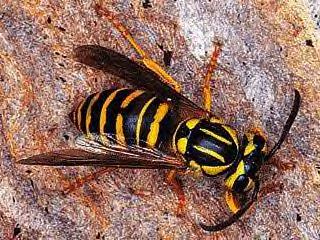|
It was this way, long ago, so the elders
say:
Back long, long ago a terrible creature used to
fly, through the air, so swiftly that no one knew just what it really looked like. It flew so fast it could not
be seen.
This terrible creature was called U-la-gu. It killed
other creatures and ate them. Sometimes it would swoop down into a group of children playing about the village
and carry one of them away. The people were very much afraid of U-la-gu.
At last, the head chiefs called council to find
a way to get rid of the terrible swift creature, U-la-gu. It was decided by the elders that they would send the
bee hunters to search for it's nest and when they found U-la-gu, to kill it.
 The bee hunters killed a squirrel, asking forgiveness for taking it's life, for they needed it to
help in getting rid of U-la-gu. To it they tied a long white string that would trail behind so they could follow
the U-la-gu when he carried the squirrel away. They put the squirrel out where the U-la-gu could find it. Soon
U-la-gu swept down and took the squirrel but moved so swiftly and flew away so fast no one could see where it went. The bee hunters killed a squirrel, asking forgiveness for taking it's life, for they needed it to
help in getting rid of U-la-gu. To it they tied a long white string that would trail behind so they could follow
the U-la-gu when he carried the squirrel away. They put the squirrel out where the U-la-gu could find it. Soon
U-la-gu swept down and took the squirrel but moved so swiftly and flew away so fast no one could see where it went.
.jpg) The bee hunters then used a turkey, again asking it's forgiveness, and tied a longer string to it.
But the same thing happened again. No one could see where U-la-gu went. Next the bee hunters set out part of a
deer with an even longer string tied to it, but U-la-gu flew away with that bait so fast it was not seen. The bee hunters then used a turkey, again asking it's forgiveness, and tied a longer string to it.
But the same thing happened again. No one could see where U-la-gu went. Next the bee hunters set out part of a
deer with an even longer string tied to it, but U-la-gu flew away with that bait so fast it was not seen.

Once more the
bee hunters tried, only this time with the whole carcass of a deer and tying a very long white string to it. Now
the deer was so heavy that the U-la-gu could hardly fly at all. It flew much slower and very low to the ground.
Besides the string was so long that U-la-gu reached home before the string was all unwound!
The bee hunters
now took their bows, arrows and spears and followed the string. They came to a great rock cliff, and there in a
big cave at the foot of the cliff was the nest of the terrible U-la-gu. The nest was much like the nest of yellow
jackets today, only much, much larger. It was so large it filled the whole cave.
When the bee hunters saw the terrible U-la-gu on
its nest in the cave, they built a great fire at the mouth of the cave. The smoke was so thick and the flames so
hot that the terrible old U-la-gu rushed out! The smoke had nearly choked it and the fire had burned its wings
so badly that it could not fly anymore. It fell down into the fire.
Then the bee hunters speared it and shot it with
their arrows until at last they had killed the terrible monster.
Suddenly a great swarm of young ones followed the
old U-la-gu out of the cave, but the bee hunters killed them as fast as they came out. A few of the smallest ones
got away, but the smoke stunted them and they never grew any larger. Now they are called yellow jackets, tuhmagazi,
instead of U-la-gu, for that is what the elders say happened.
Now, if you watch the yellow jackets today, you
will see that they still carry away any meat or fish they can get. And they still fly so fast you can hardly see
them go. They build their nests in caves and stumps, but are harmless now unless you bother them, for then they
will sting you. It is their protection and defense.
Yellow Jackets carry away honey when they can get
it, so the bee hunters are still their enemies and kill them when they can. But the bee hunters should not kill
the yellow jackets, for the yellow jackets kill many flies and eat them. The yellow jacket is now useful to us
and should not be disturbed. The yellow jackets are a part of the web of life and they should be respected and
protected for the good they do.

|